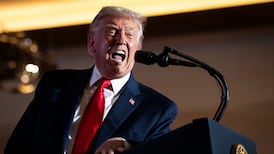To say that the world is entering the final stages of the Covid-19 pandemic is to identify oneself as a resident of the rich world. Viewed from Dublin, Paris, Washington or any other western capital, where restrictions are being lifted and vaccination campaigns are reaching a critical mass of the population, it does indeed seem as if the worst of the emergency has passed. But that’s a partial, distorting vantage point. In reality a two-track pandemic is taking shape. What separates the two is access to vaccines. As Europe debates whether to vaccinate children and plans how to store excess stock for use as booster shots in the future, in developing countries unvaccinated healthcare workers battle daily against soaring infection rates, high levels of severe illness and even shortages of oxygen.
When G7 leaders meet in England later this week, correcting this imbalance should be the first item on the agenda. On both pragmatic and moral grounds, the case for concerted action is clear. No country is protected against Covid-19 until every country is protected. The more the virus circulates, the more it is likely to mutate. Some strains are already putting up resistance to approved vaccines and could jeopardise plans to reopen economies; future ones could pose even greater challenges. The cost of a two-dose vaccine is as low as $4, yet that's just a fraction of the cost of each case of infection – through healthcare costs, lost education, stalled economic activity, pressure on households and other factors.
The global vaccination target is currently set at 30 per cent. That's not ambitious enough
But the strongest argument for equity of vaccine distribution is a moral one. The pandemic has been a grim reminder of the structural inequalities between rich and poor. It is indefensible that healthy young westerners at miniscule risk of dying from the virus have access to vaccines while the elderly and medically-vulnerable in Africa or Latin America must wait. Emerging research suggests that death rates in many developing countries are much higher than originally reported – Peru last week said its Covid-19 death toll was almost three times as high as it first reported – and the virus is still rampant in many regions.
It’s not too late to avoid a permanent stain on humanity’s conscience. While the Covax vaccine-sharing initiative has brought live-saving shots to many developing countries, it needs far more donations. The global vaccination target is currently set at 30 per cent. That’s not ambitious enough. Through investment in production as well as patent waivers and a greater willingness among rich states to share their supply, global inoculation rates could increase dramatically.
But it will require leadership from the world’s major powers. The IMF calculates that $50 billion in new spending could significantly accelerate the end of the pandemic in the developing world. In a very real sense, G7 leaders face life-or-death decisions when they meet this week.









